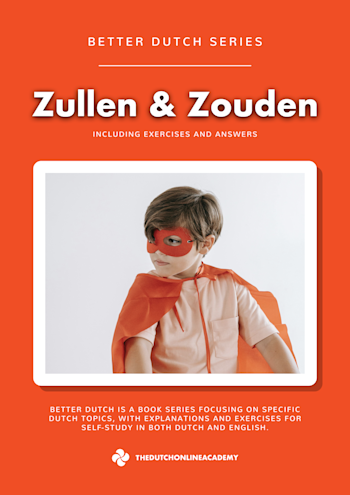Learn the theory
The relative clause follows after a noun. The relative clause gives extra information about the noun.
In the examples below, the noun is underlined and the relative clause is italic. The bold word is the connector.
- Dit is de jas die ik gisteren heb gekocht.
- Daar loopt het meisje dat naast mij woont.
- Dit is de film waarin de beroemde acteur speelt.
- Yvonne is een vrouw met wie ik regelmatig praat.
- Ik zoek iets wat ik kan dragen op de bruiloft van mijn vriendin.
- Dat is het dorp waar ik geboren ben.
die for de woorden (de jas)
dat for het woorden (het meisje)
waar + prepositie for objecten met een prepositie.
prepositie + wie for personen met een prepositie.
wat for nouns that stand for something undefined, like iets and niets.
waar for places.
So, also when you make a relative clause about a person, you have to know whether it's a de or het word. Look:
- Het kind dat zo goed kan tennissen, mag meedoen aan het Nederlands kampioenschap.
- De jongen die zo goed kan tennissen, mag meedoen aan het Nederlands kampioenschap.
If there the noun is the object of a prepositional verb, you use prepositie + wie:
- Het kind over wie iedereen praat, mag meedoen aan het Nederlands kampioenschap.
- De jongen over wie iedereen praat, mag meedoen aan het Nederlands kampioenschap.
For things, you'll have to use waar + preposition:
- Het boek waarover iedereen praat, ligt nu in de winkels.
- De film waarover iedereen praat, draait vanaf volgende week in de bioscoop.
The verbs come at the end of the relative clause, since it is a subordinate clause. Interested in Dutch word order? Take a look at Dutch Word Order in a Nutshell.
Really want to practice? Take a look at our PDF about the relative clause.
Practice with exercises
Kies het relatief pronomen.
comments
Login to leave a comment



![Learn Dutch with The double infinitive in Dutch [list of auxiliary verbs included]](https://images.ctfassets.net/f8l4gy5qxe00/7fpaN2iBE3h1xS7LRL8c0h/3bbebedc080cbf7eece73424c8e3918f/The_double_infinitive.png?w=350&h=495&q=50&fm=png)